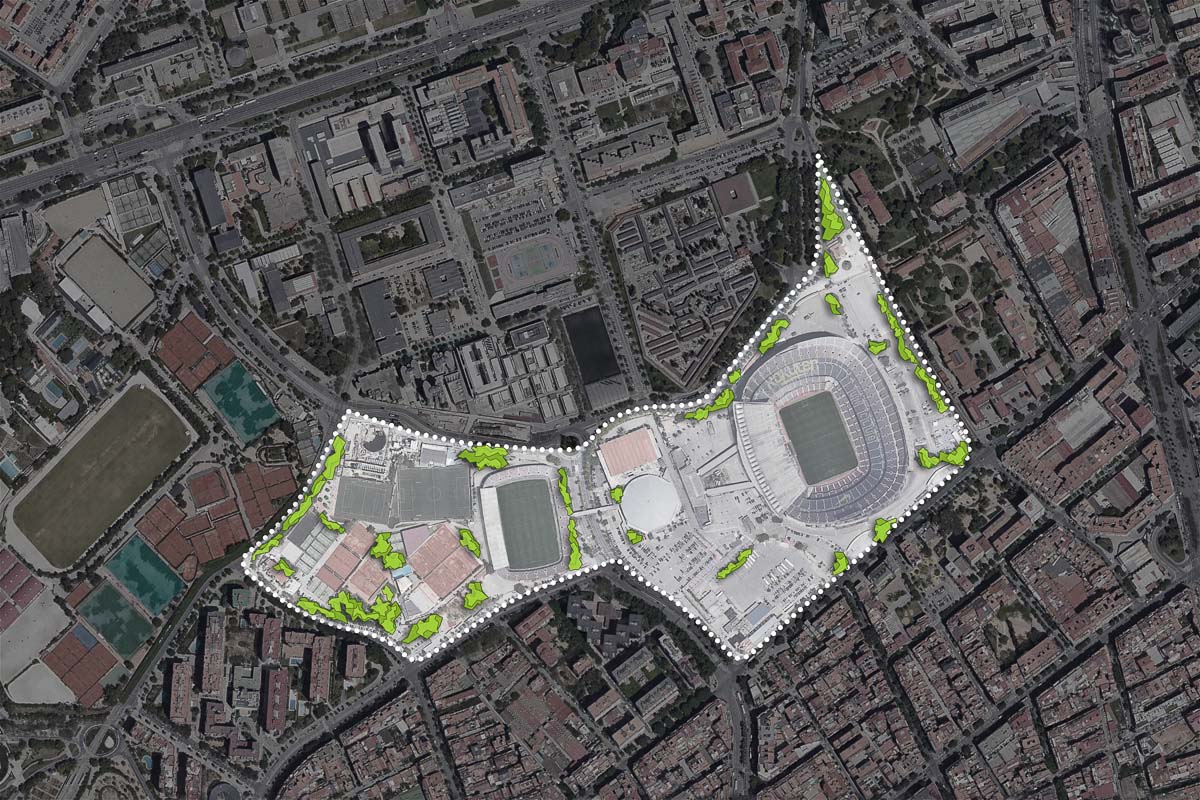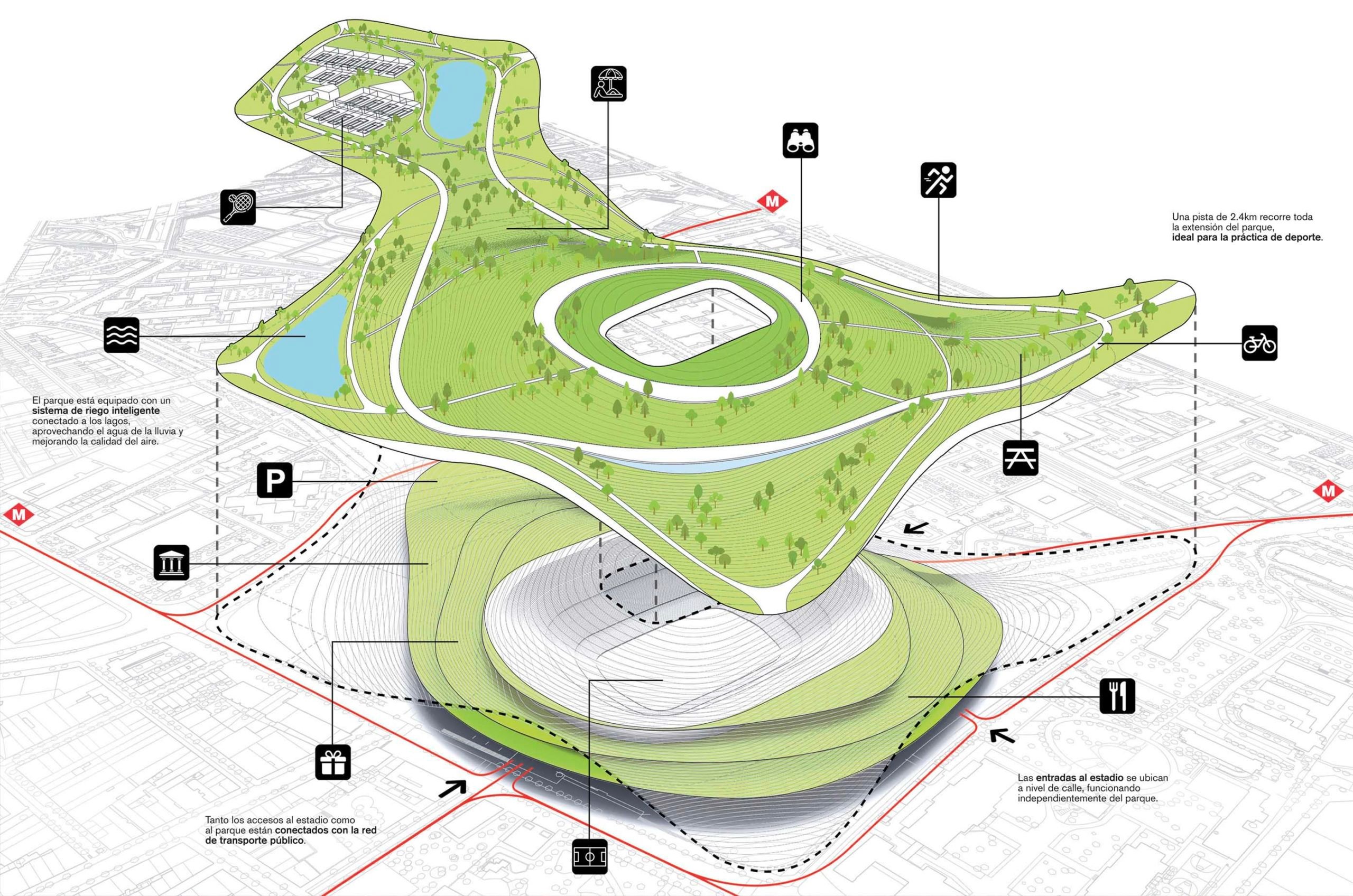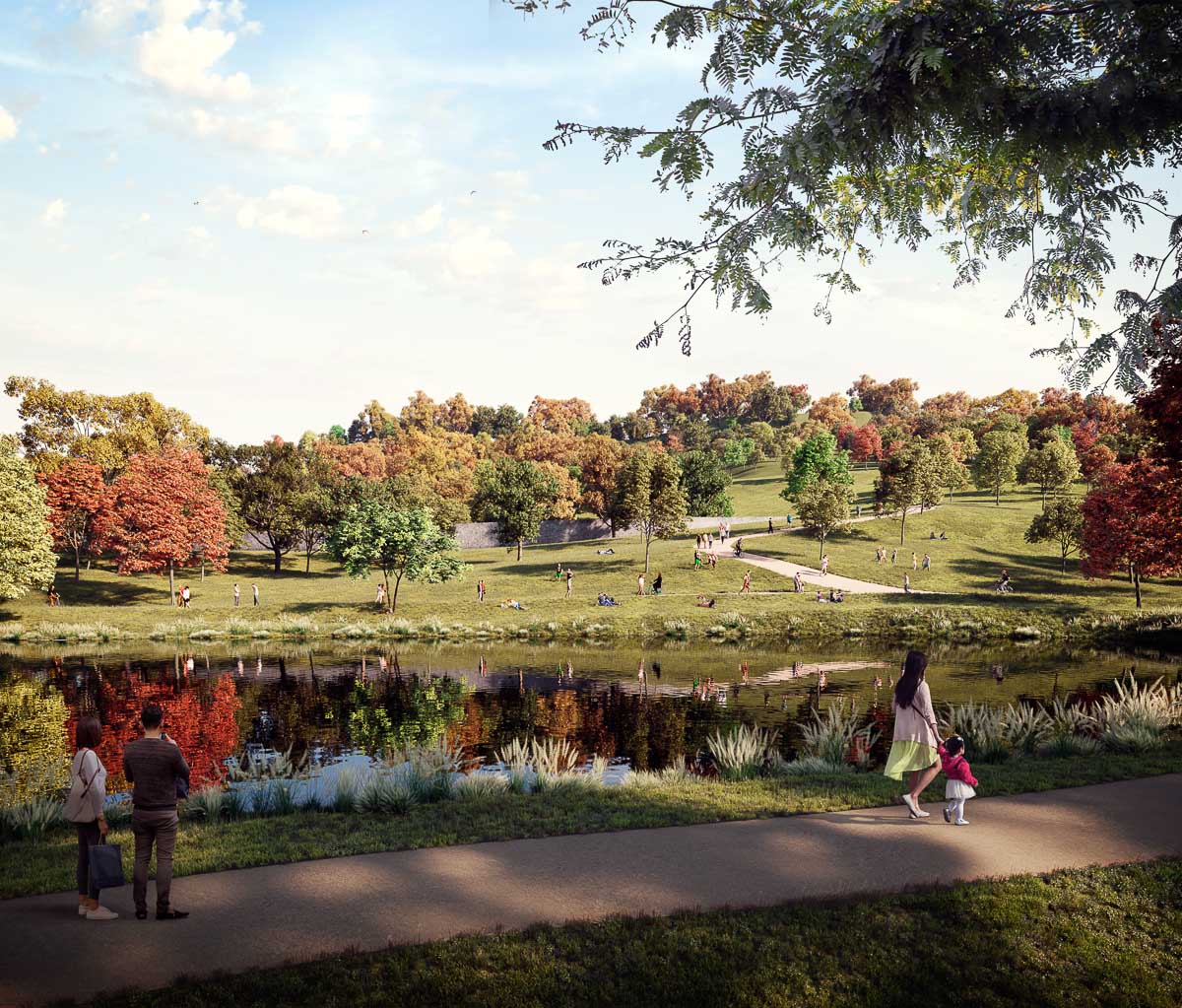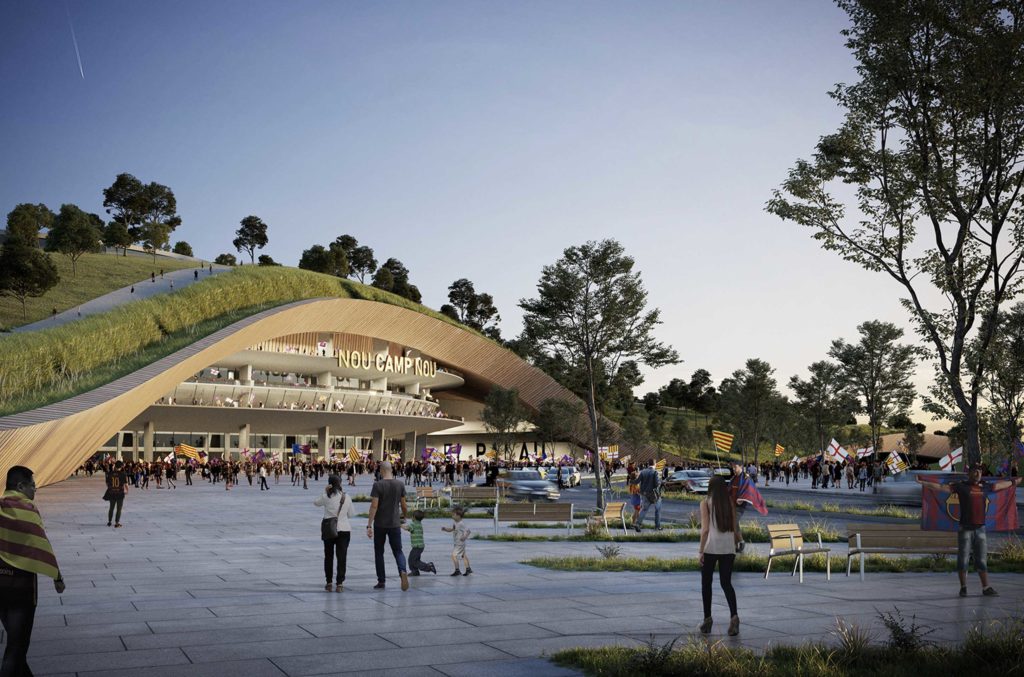Barcelona currently has just over 6 m² of green areas per inhabitant. According to the WHO (World Health Organization), cities are supposed to have a minimum of 9 m². ON-A’s proposal of Nou Parc, a forest that would cover Camp Nou in Barcelona, aims to turn the area into a great green lung using bioarchitecture as a strategy for renaturation.
Currently, this area is a closed space made of concrete and only has some 8 % of green areas. The consequence is the effect of an “island”, separating the neighbourhoods of Les Corts and Zona Universitaria.

According to the office’s philosophy, the renaturation of cities and the creation of quality spaces for its citizens is not just an exciting idea, but a necessity. The Nou Parc project shows how nature could come back to the cities without losing buildable spaces, raising the topography and creating a blanket of green forest above the stadium and its facilities, which would remain below the surface of the new park.

The space is immense and is in disuse most of the time, except during sports events or private visits to its facilities. It is common for neighbours to experience collapse during major events when the space comes into operation. The conversion of this area would provide a great opportunity for the city of Barcelona, which would gain a new green space capable of connecting neighbourhoods while producing 15,000 kg of oxygen/day and absorbing 25,000 kg of C02/day.

As you walk or run through the forest, stretch in green areas, and picnic in reserved areas, you will be able to enjoy a 360º panoramic view at the highest point of the park, which culminates around the stadium. The two lakes are natural collectors of rainwater, which can be reused for irrigation and maintenance of the park, and help cool the temperature and contribute to the development and maintenance of the area.

A new permeability would be created as a result of this project, enabling the connection between Les Corts and the University Area, while also adding value to their neighbours and the city of Barcelona without affecting mobility or current logistics.








